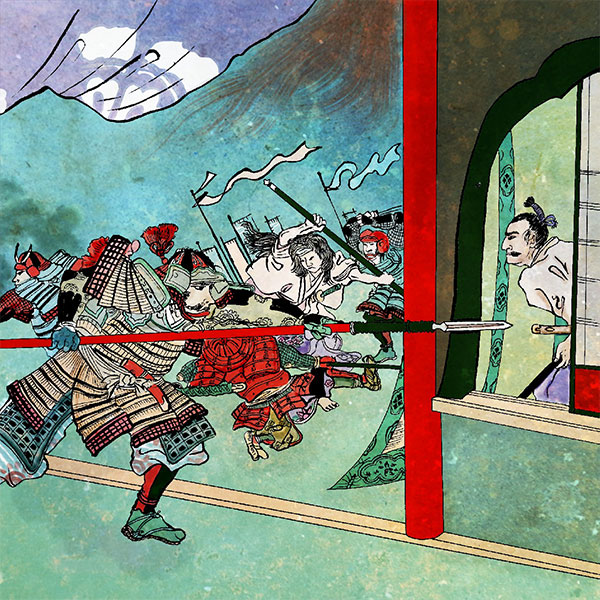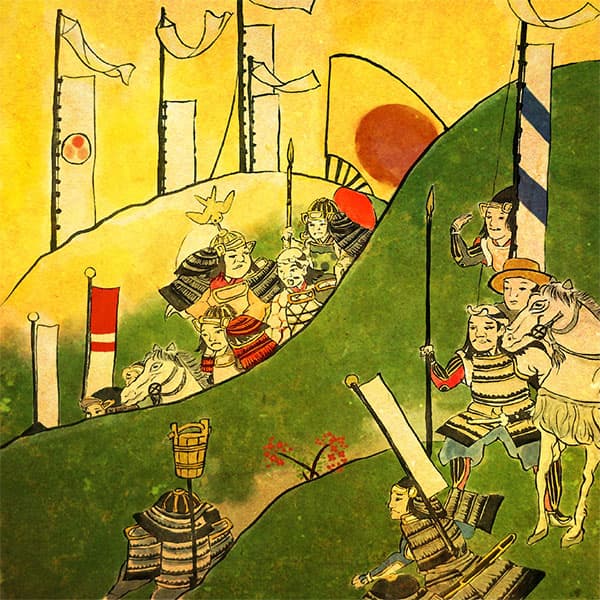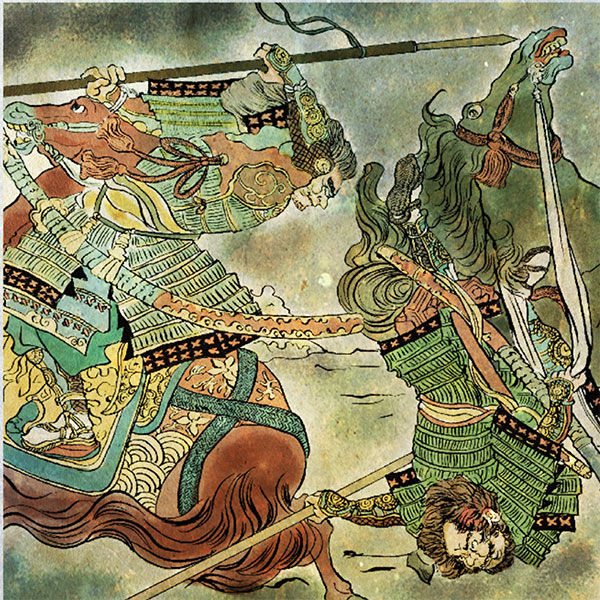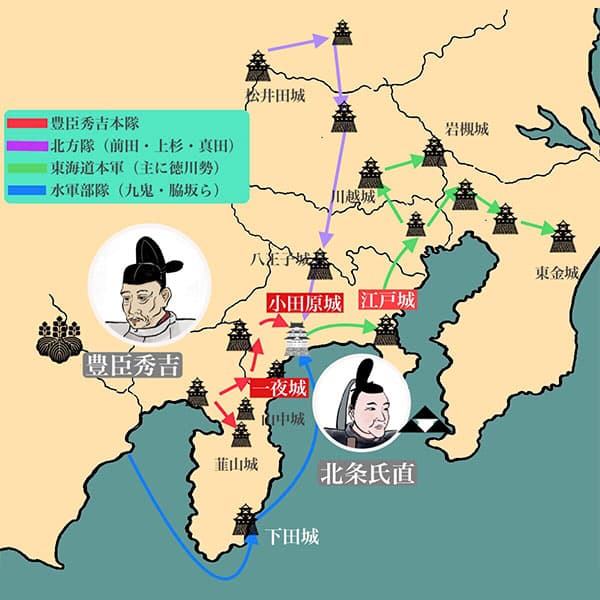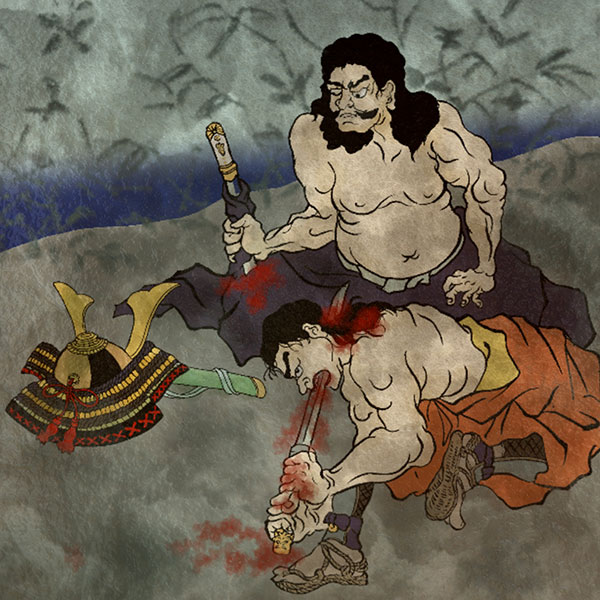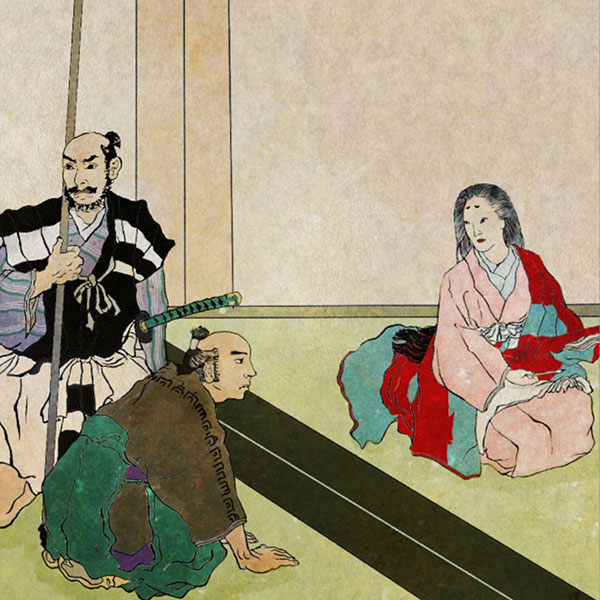Tadaoki Hosokawa (1/2)Hideyoshi's Seven Generals
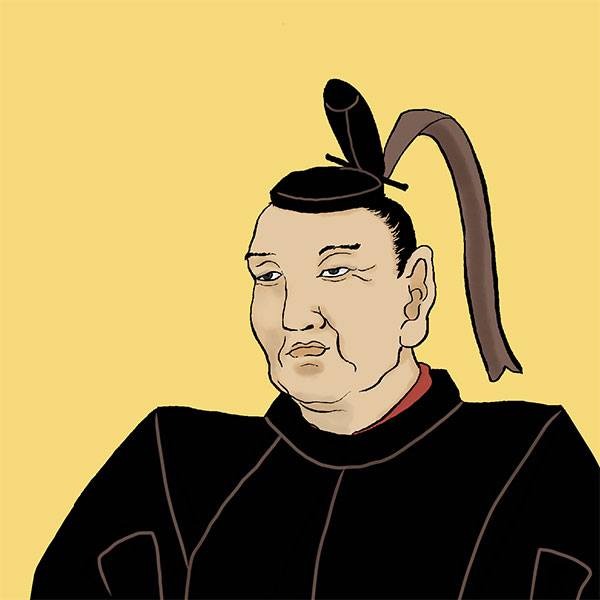
Tadaoki Hosokawa
- Article category
- biography
- name
- Tadaoki Hosokawa (1563-1646)
- place of birth
- Kyoto
- Related castles, temples and shrines

Kokura Castle

Nakatsu Castle

Yatsushiro Castle

Shoryuji Castle

Tanabe Castle

Kumamoto Castle
- related incident
Even during the Sengoku period, when Japan was full of battles and turbulent times, the flower of culture flourished. They are tea ceremony and renga. Hosokawa Tadaoki was a feudal lord who served the Muromachi Shogunate, Oda, Toyotomi, and Tokugawa while cultivating culture during the Warring States period. Tadaoki was born as the son of Fujitaka Hosokawa and married Tamako (Garasha), the daughter of Mitsuhide Akechi, who was his father's ally. It was in this environment that Tadaoki rose to become the daimyo of Kumamoto. This time, we will be looking at Tadaoki Hosokawa.
The Hosokawa family where Tadaoki was born
Hosokawa clan where Tadaoki Hosokawa was born. Speaking of the Hosokawa clan, Katsumoto Hosokawa, who became commander-in-chief of the Eastern Army during the Onin War, is famous, and Tadaoki Hosokawa's family is an offshoot of the Hosokawa clan.
The Hosokawa clan was a member of the Ashikaga clan that would later establish the Muromachi Shogunate. During the Kamakura period, he ruled over Hosokawa-go, Nukata District, Mikawa Province (around present-day Hosokawa-cho, Okazaki City, Aichi Prefecture), and took the name Hosokawa from this land.
During the period of the Northern and Southern Courts, he followed the Ashikaga family and played an active role. Takauji Ashikaga gave preferential treatment to the Hosokawa clan, who supported him, and made him the guardian of eight countries, mainly the Kinai (Kinki) and Shikoku regions. He was also one of the three kanrei (kanrei), a high rank within the shogun family.
Tadaoki Hosokawa's father, Fujitaka Hosokawa, was born as the second son of Haruto Mibuchi. He was adopted by Mototsune Hosokawa, a tributary of the Hosokawa family, who was the older brother of his father, Haruto. (There are various theories about the family that Fujitaka Hosokawa inherited) Fujitaka served the 13th shogun Yoshiteru Ashikaga and the 15th shogun Yoshiaki Ashikaga of the Muromachi shogunate.
Yoshiaki Ashikaga became a shogun with the help of Oda Nobunaga, but was later shunned and forced to leave the capital. There, Fujitaka ended up serving Oda Nobunaga.
Tadaoki's childhood
Hosokawa Tadaoki was born in Kyoto in 1563. He was born as the eldest son of Fujitaka Hosokawa, who served the 13th Shogun Yoshiteru Ashikaga of the Muromachi Shogunate.
In 1565, the Eiroku Incident occurred, and Yoshiteru Ashikaga, who Fujitaka served, was killed. Yoshiteru's death led to the issue of succession to the shogun, and Fujitaka and other former vassals of Yoshiteru turned to Oda Nobunaga, the feudal lord of Owari and Mino provinces, to carry Yoshiteru's younger brother, Yoshiaki. Yoshiaki became the 15th shogun, but eventually Nobunaga and Yoshiaki came into conflict. Nobunaga expelled Yoshiaki and the Muromachi Shogunate came to an end.
Fujitaka Hosokawa, who served Yoshiaki Ashikaga, served as a retainer to Nobunaga, and his son Tadaoki Hosokawa served Nobunaga's eldest son, Nobutada.
In 1577, at the age of 15, Hosokawa Tadaoki joined the Oda family's Kishu conquest and made his first appearance.
Genpuku is celebrated in 1578. In the same year, at the urging of his lord Nobunaga Oda, he married Tamako (Garasha), the third daughter of Mitsuhide Akechi, an ally of Fujitaka Hosokawa.
In 1579, Hosokawa Fujitaka, Tadaoki and his father-in-law, Akechi Mitsuhide, destroyed the Isshiki family, which was the shugo of Tango Province (present-day Hyogo Prefecture). The following year, in recognition of their success in conquering Tango Province, the Hosokawa family was given the southern half of Tango as their fiefdom.
Tadaoki and Honnoji Incident
However, on June 2, 1582. Hosokawa Tadaoki's father-in-law, Akechi Mitsuhide, forced his lord Oda Nobunaga to commit suicide at Honnoji Temple.
Immediately after the Honnoji Incident, Mitsuhide invited Hosokawa Fujitaka and Tadaoki, father and son, to his side. However, without giving a clear answer, the Hosokawa family announced that they would shave their heads in mourning for Nobunaga. In effect, this is an expression of criticism against the Akechi family. At this time, their father Fujitaka took the name Yusai and Tadaoki took the name Sansei because they shaved their heads.
Furthermore, Tadaoki's wife, Mitsuhide's third daughter Tamako, was imprisoned. Also, since Fujitaka Hosokawa retired at this time, the territory was ruled by his son Tadaoki, who became the lord of Miyazu Castle in Tango.
Akechi Mitsuhide, whose cooperation was refused by Hosokawa and his son, was defeated and killed in the Battle of Yamazaki, where he clashed with Hashiba Hideyoshi (Toyotomi Hideyoshi). The Hosokawa family became friends with Hideyoshi Hashiba, who had defeated Mitsuhide Akechi, and defeated the Isshiki family in northern Tango Province, who had sided with Mitsuhide, and was granted possession of the entire Tango area by Hideyoshi.
Toyotomi family era
After Oda Nobunaga committed suicide and Toyotomi Hideyoshi entered the era, Hosokawa Tadaoki became active under the Toyotomi government. He participated in the battles of Komaki and Nagakute, the Kyushu conquest, the Odawara conquest, and the Korean invasion. During this time, Tadaoki was appointed to the rank of Junior Fourth Rank (Junior Fourth Rank, Lower Grade) and Chamberlain.
and Tadaoki Hosokawa under the Toyotomi government. During this period of the Toyotomi family, Tadaoki developed a talent that was different from that of a samurai: he was a man of culture.
In the tea ceremony that was popular at the time, he studied under Sen no Rikyu and is considered one of Rikyu's seven philosophies. It is said that when Rikyu was ordered to commit Hideyoshi-style seppuku, Tadaoki and Oribe Furuta were the only daimyos connected to Rikyu to visit him.
He was also deeply involved in the creation of arms and armor, as well as in the creation of waka poetry, Noh, and paintings. This is probably because his father, Fujitaka Hosokawa, received ancient and modern teachings and established modern poetics, and was deeply knowledgeable about martial arts, waka, tea ceremony, renga, kemari, etc., and was one of the most educated people of his time.
Now, let's talk about Bunroku 4 (1595). Toyotomi Hideyoshi's nephew, Kanpaku Toyotomi Hidetsugu, was suspected and ordered to commit seppuku. At this time, the Hosokawa family was suspected of having a close relationship with Hidetsugu because they owed money to him. The chief retainer, Yasuyuki Matsui, scrambled to collect the money and return it to Hideyoshi. At this time, Tokugawa Ieyasu lent money to the Hosokawa family.
Toyotomi Hideyoshi died in 1598. The following year, Tokugawa Ieyasu, the leader of the Toyotomi family, gave special recommendations and gave the Hosokawa family 120,000 koku in Tango Province and 60,000 koku in Kitsuki, Bungo Province, Kyushu. The Hosokawa family became a feudal lord with a total of 180,000 koku, and they appointed senior vassals such as Yasuyuki Matsui to govern Kyushu. In this way, Hosokawa Tadaoki and Tokugawa Ieyasu became closer.
Battle of Sekigahara
In 1598, Toyotomi Hideyoshi passed away. After Hideyoshi's death, friction arose between Ishida Mitsunari, the magistrate, and the military commanders who were Hideyoshi's children, and Mitsunari was attacked by the military commanders. At this time, Tadaoki Hosokawa also participated in the attack.
In 1600, one of the senior leaders, Kagekatsu Uesugi, questioned the actions of Tokugawa Ieyasu. In response, Ieyasu raised an army to conquer Kagekatsu, suspecting him of rebellion, and Tadaoki also joined this army.
Ieyasu and his conquest army leave Osaka and arrive in the Kanto region. Then Ishida Mitsunari raised an army against Tokugawa Ieyasu in Osaka.
At this time, the wives and children of the military commanders who were participating in Ieyasu's army were gathered and living in Osaka. The same goes for Tadaoki's wife Tamako (Garasha). Ishida Mitsunari took his wife and children hostage and decided to make the military commanders who were attached to Ieyasu defect.
However, the warlord's wife and children reject this. Many of his wives and children escaped from the mansion, but Tamako refused to run away or be taken hostage. Tadaoki Hosokawa expected that Mitsunari Ishida would rise up once the army to conquer Uesugi moved. Therefore, Tamako was told to protect his honor and commit suicide rather than become a hostage. You can see the harsh side of Tadaoki's personality.
Tamako, who believed in Christianity, refused to commit suicide, and with the help of his retainers, he was set on fire so that no body remained.
When Tadaoki learns that Tamako died after refusing to be taken as a hostage, he becomes inspired and plays an active role in the Battle of Sekigahara. Thanks in part to Tadaoki's brave fight, Tokugawa Ieyasu won the Battle of Sekigahara, and Ishida Mitsunari was later captured.
Tokugawa period
The Hosokawa family made great contributions to the Tokugawa family through the Battle of Sekigahara, the main battle at Sekigahara, the preliminary battle of Tanabe Castle in Tango Province, and the enclave of Bungo Province in Kyushu.
The Tokugawa family seized Tango Province, the main territory of Tadaoki Hosokawa, who had made a great contribution, and gave him Nakatsu, Buzen Province. Combined with Bungo Kitsuki, he became a great daimyo with a net worth of 400,000 koku.
- related incident

- WriterTomoyo Hazuki(Writer)I have loved history and geography since my student days, and have enjoyed visiting historical sites, temples and shrines, and researching ancient documents. He is especially strong in medieval Japanese history and European history in world history, and has read a wide range of things, including primary sources and historical entertainment novels. There are so many favorite military commanders and castles that I can't name them, but I especially like Hisashi Matsunaga and Mitsuhide Akechi, and when it comes to castles, I like Hikone Castle and Fushimi Castle. Once you start talking about the lives of warlords and the history of castles, there's a side of you that can't stop talking about them.







